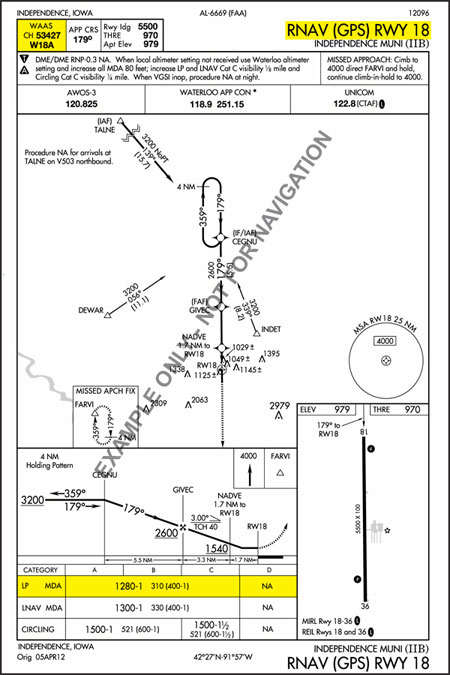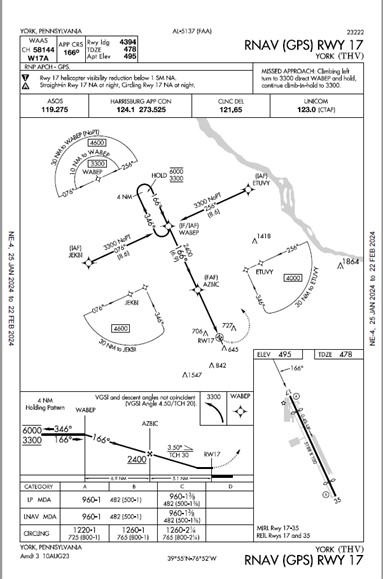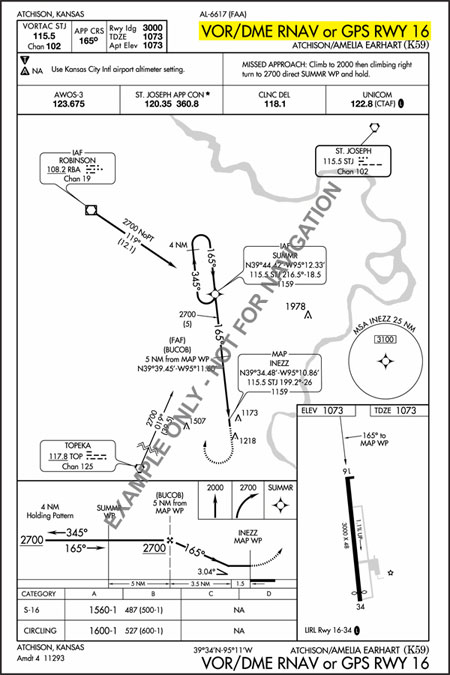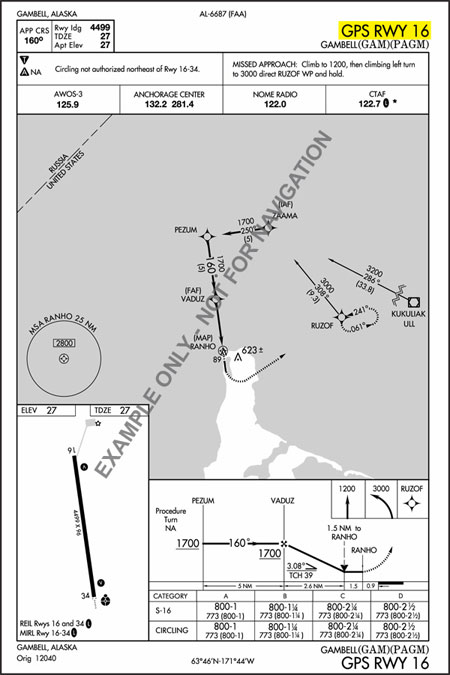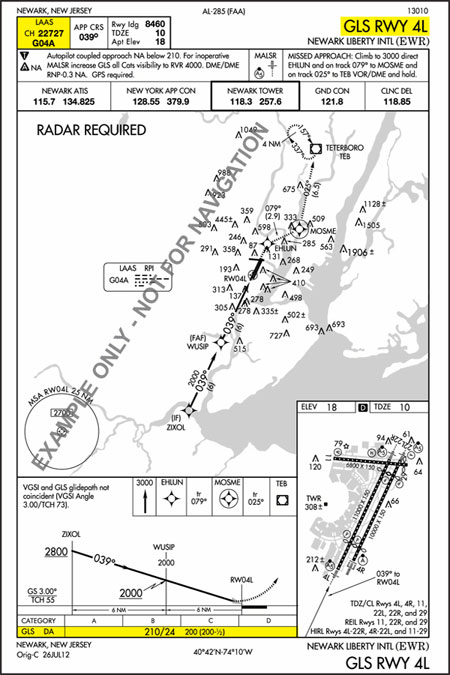NAS Implementation - Procedures - RNAV (RNP) IAPs
Required Navigation Performance (RNP) is similar to Area Navigation (RNAV); but, RNP requires on-board navigation performance monitoring and alerting capability to ensure that the aircraft stays within a specific containment area.
There are several different levels of RNP. Examples of RNP levels used for approach include RNP 0.1, RNP 0.3, and RNP 1.0 (There are also RNP 4.0 and RNP 10.0 levels that apply in the en route environment). "A performance value of RNP 0.3, for example, assures that the aircraft has the capability of remaining within 0.3 of a nautical mile to the right or left side of the centerline 95 percent of the time." (FAA Instrument Procedures Handbook, p. 5-12)
Two typical applications of RNP for approach are shown in the table below. These are:
Table 1-2-1: U.S. Standard RNP Levels| RNP Level | Typical Application | Primary Route With (NM) - Centerline to Boundary | | 0.1 to 1 | RNP AR Approach Segments | 0.1 to 1 |
| 0.3 to 1 | RNP Approach Segments | 0.3 to 1 |
| This table and more information about RNP can be found in in Section 1.2.2. of the AIM |
RNP Authorization Required (AR) Approach IAPs
RNP Authorization Required (AR) Approach IAPs require authorization analogous to the Special Aircraft Authorization Required (SAAR) for Category II or III Instrument Landing System (ILS) procedures.
Authorization Required (AR) procedures may only be conducted by aircrews meeting special training requirements in aircraft that meet the specified performance and functional requirements.
The minima line will include a performance value, RNP 0.30 for example. GPS with WAAS can support RNP 0.3 and above.
Example: RNAV (RNP) Z RWY 24 at Carlsbad/McClellan-Palomar (CRQ)
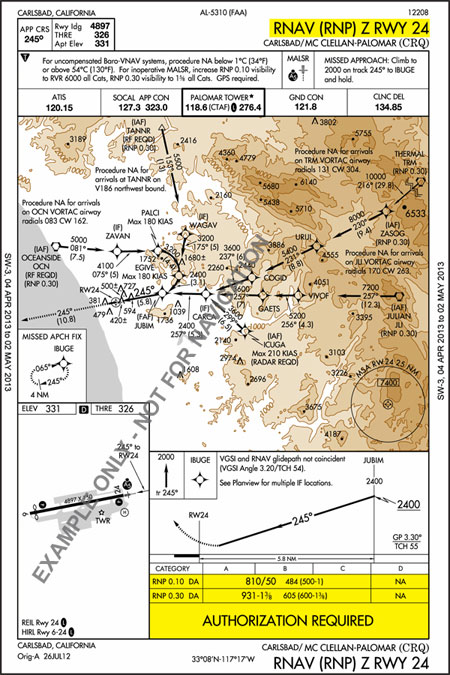
RNP Approach IAPs
At present, there are no RNP Approach IAPs that are not of type AR. This may change in the future.
More information about RNAV (RNP) IAPs can be found the AIM.
« Back to NAS Implementation - Procedures




